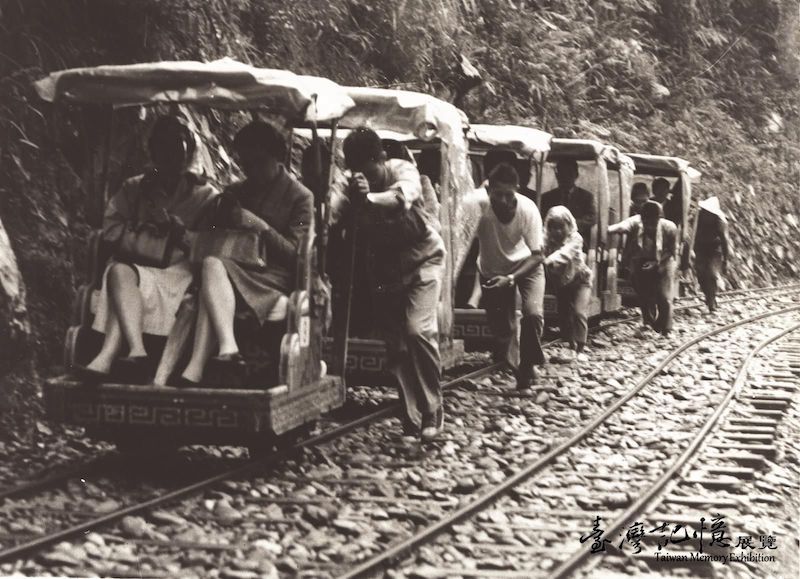On the railcars, tourists are talking and laughing. Their faces clearly show their happy feelings. Behind the railcars, the carmen are bent over with beads of sweat dropping off them like rain. Scenes such as this were common in picture albums during the early years of the Wulai Railroad.
The tracks of the Wulai Railroad were installed in during the Japanese occupation as a means to develop Wulai and transport lumber. Later, it became the main means of contact between Wulai and the outside. After the retrocession, sections of the tracks were removed over time. However, since the distance between Wulai station and the waterfall is 1.7 km, that section was kept to meet the needs of tourists. Visitors would sit on the railcars and ascend the windy side of the mountain until arriving at the magnificent waterfall. It seems like it would be very romantic!
In 1966, a gondola started operating in Wulai, causing a huge influx for the railcars. In 1974, the forestry administration changed to diesel-fueled engines and the hand-pushed railcars entered the history books. While this practice of having carmen push the railcars seems inhumane by today’s standards, during that era of widespread poverty it created many job opportunities for poor people.

A Look at the Old Wulai Railroad 2
- NCL Special Collection / Huang Shu-min / Before 1960 / 18×13cm / 《Visual Feast》


